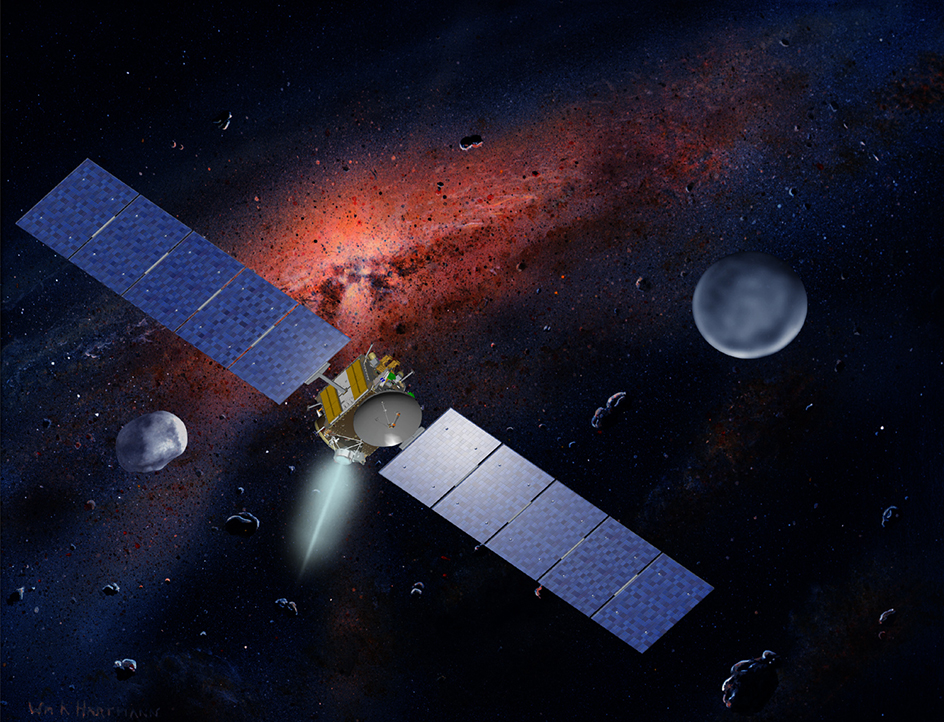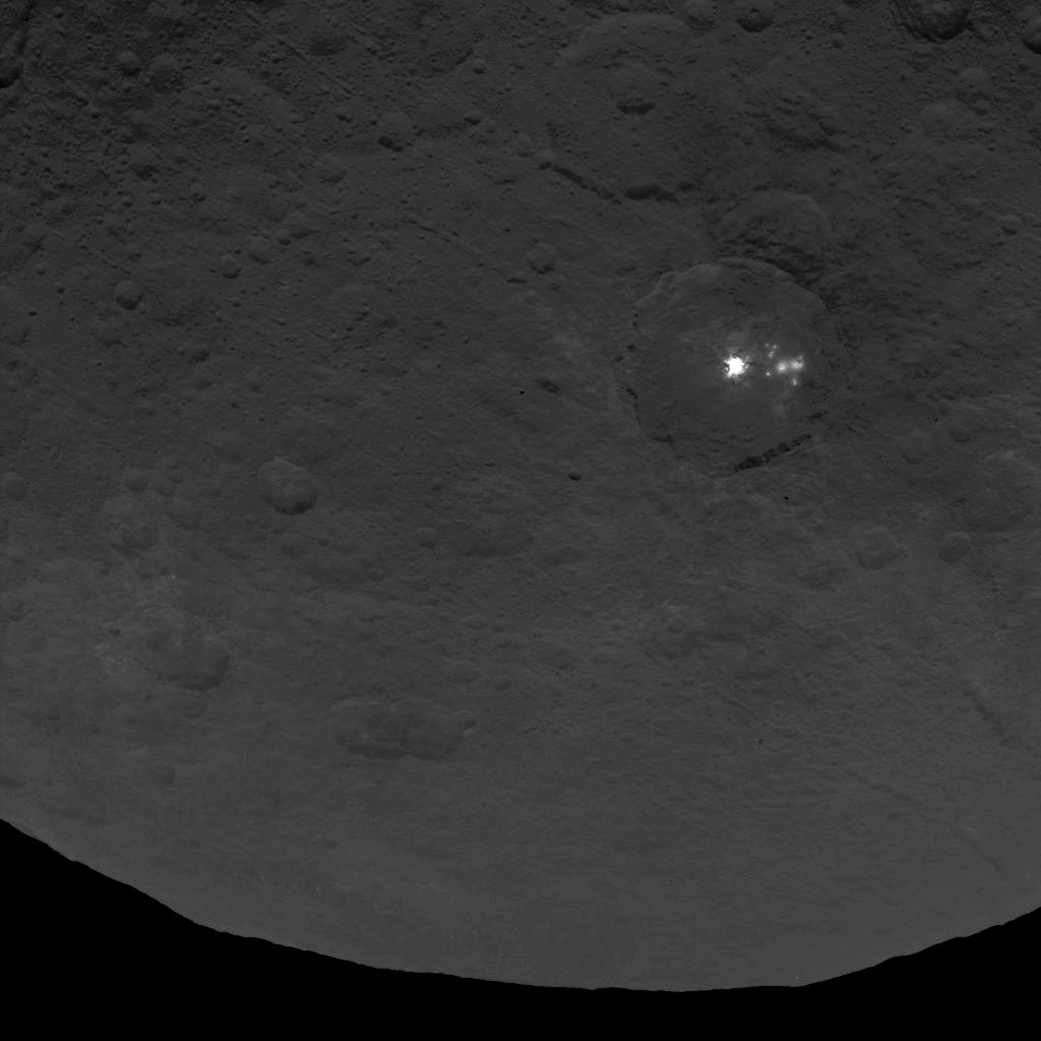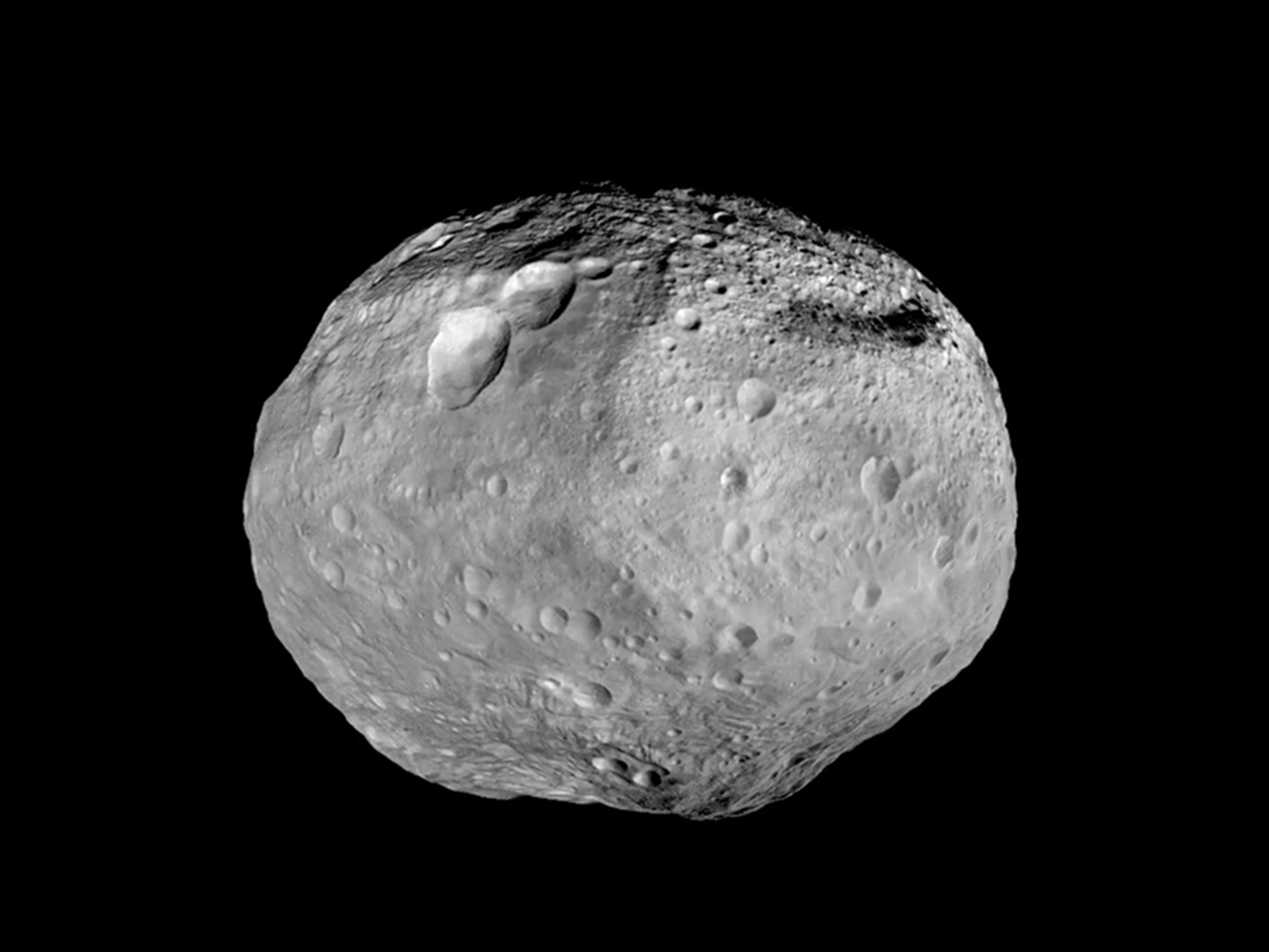Dawn was a space probe sent to study two of the largest asteroids, Ceres and Vesta. These two bodies formed early in the history of the solar system and have remained intact since that time. By analyzing data gathered by Dawn, scientists hope to learn more about conditions in the early solar system. Ceres and Vesta orbit the sun between the orbits of Mars and Jupiter in a region known as the Main Belt. Ceres, the largest asteroid in the Main Belt, is large enough that the International Astronomical Union (IAU), an organization of astronomers, classifies it as a dwarf planet.
The Dawn Mission was a project of the United States National Aeronautics and Space Administration (NASA). Dawn carried such scientific instruments as cameras and spectrometers to map the surfaces of the asteroids. A spectrometer spreads out light or other types of radiation into a range of wavelengths called a spectrum (plural, spectra). Analyzing the radiation reflected or scattered by an asteroid’s surface enables scientists to study its chemical composition. Dawn was also designed to measure the gravitational pull of each asteroid to determine its mass (amount of matter) and whether or not its interior is uniform or has layers, such as a core.

Scientists know from telescope observations of Ceres and from studies of meteorites that originated on Vesta that the two asteroids have different makeups and so have distinct histories. A meteorite is a fragment of asteroid or comet material that has fallen to Earth. Ceres has a relatively smooth and dark surface consisting of claylike minerals that contain water. In contrast, Vesta is brighter and has a surface rich in silicates (rock-forming compounds) of iron and magnesium. It has signs of past lava flows and may contain a large impact crater. Data collected by Dawn will help scientists understand the processes that produced such different surfaces.

NASA launched Dawn in 2007. The craft traveled to the Main Belt by ion propulsion, a method of propelling space vehicles by ejecting charged particles called ions (see Rocket (Ion rockets)). This method enabled Dawn to reach Ceres and Vesta at a lower cost than would conventional chemical propulsion. However, ion propulsion also increased the craft’s travel time. Dawn reached orbit around Vesta for a one-year study of the asteroid in 2011 and went into orbit around Ceres in 2015.
NASA scientists noticed that Dawn failed to make two scheduled communication sessions in late October, 2018. Mission controllers concluded that the spacecraft had run out of the limited amount of chemical fuel it used to keep its antennae pointed towards Earth. NASA officially ended the Dawn mission on Nov. 1, 2018. The inactive space probe will continue to orbit Ceres indefinitely.

See also Asteroid; Double Asteroid Redirection Test (DART).
